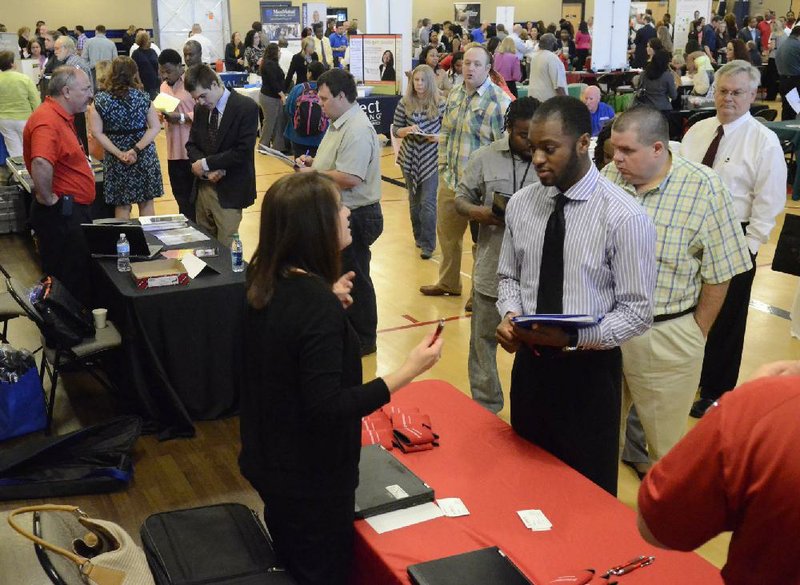WASHINGTON - The number of Americans seeking unemployment benefits rose 32,000 last week to a seasonally adjusted 360,000, the most since late March. The jump came a week after applications had reached a five-year low.
The less volatile four week average rose just 1,250 to 339,250, the Labor Department said Thursday. That’s a level consistent with modest job gains.
“The underlying story in jobless claims continues to be one of gradual improvement,” said Julia Coronado, an economist at BNP Paribas.
Coronado said the small rise in applications “highlight[s] the need to take volatile weekly readings with a grain of salt.”
Weekly applications are a proxy for layoffs. The big increase might mean companies are cutting more jobs, possibly because of government spending cuts that kicked in March 1.
Applications tend to fluctuate sharply from week to week, and economists typically focus more on the four week average. That average remains 9 percent lower than it was six months ago.
The job market has improved over the past six months. The economy has added an average of 208,000 jobs a month since November. That’s up from 138,000 a month in the previous six months.
Still, much of the job gains have come from fewer layoffs - not increased hiring. Layoffs fell in January to the lowest level on records dating back 12 years and have risen only modestly since then. Overall hiring remains far below pre-recession levels.
The unemployment rate has also fallen to a four-year low, although it remains high at 7.5 percent.
The number of people receiving benefits fell 30,000 to 4.8 million in the week ended April 27, the latest data available. That’s down from 6.3 million a year ago. Some of those recipients have probably gotten jobs, but many have simply used up all their available benefits.
Companies may not be confident enough in the economic outlook to rapidly boost hiring. Some businesses may be concerned about the effect of the federal spending cuts and tax increases. An increase in Social Security taxes with the end of a payroll tax break at the beginning of this year could slow consumer spending, which drives nearly two-thirds of economic activity.
Still, consumers appear to be shrugging off the tax increases, helped by cheaper gas and steady job gains.
Consumer spending rose from January through March at the fastest rate in more than two years. And Americans boosted their spending at retailers in April, from cars and clothes to electronics and appliances.
Some analysts raised their growth forecasts for the April-June quarter after the April retail sales report. Even so, most expect growth has slowed to an annual rate of around 2 percent, down from the 2.5 percent growth rate reported for the January-March quarter.
Business, Pages 27 on 05/17/2013

